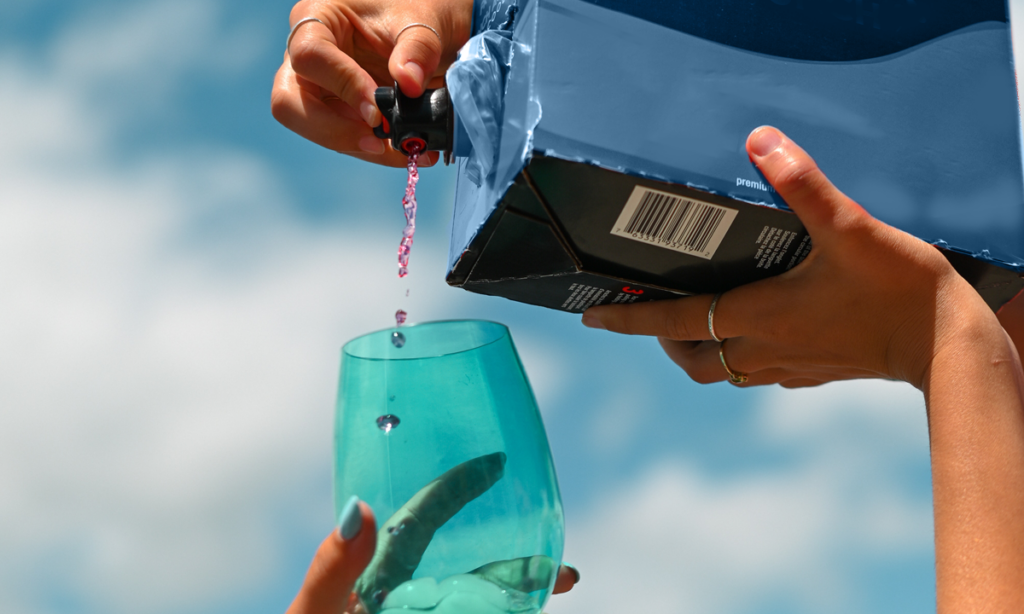There is a rising star in the convenience store alcohol market – boxed wine. As of Q3 2023, boxed wine now accounts for 10.59% of total wine spending, up from 8.53% in Q4 2022. This growth underscores its popularity among consumers. Fintech’s data insights can help convenience store operators identify the leading brands in this category, enabling them to make informed stocking decisions.
Top Performers in the Boxed Wine Category*
| Q4 2022 | Q3 2023 | |||||
| Wine Varietal | Market Share | Rank | Market Share | Rank | Variance | Rank Change |
| Chardonnay | 20.5% | 1 | 22.05% | 1 | 1.51% | – |
| Cabernet Sauvignon | 16.1% | 2 | 14.76% | 2 | -1.34% | – |
| Red Blend | 14.6% | 3 | 12.91% | 4 | -1.71% | 1 |
| Pinot Grigio | 13.5% | 4 | 14.46% | 3 | 0.98% | (1) |
| Merlot | 5.9% | 5 | 5.57% | 6 | -0.30% | 1 |
| White Blend | 5.1% | 6 | 5.57% | 5 | 0.52% | (1) |
| Pinot Noir | 4.8% | 7 | 3.95% | 8 | -0.89% | 1 |
| Sauvignon Blanc | 3.7% | 8 | 3.94% | 9 | 0.27% | 1 |
| Blush | 3.5% | 9 | 4.15% | 7 | 0.64% | (2) |
| Moscato | 3.2% | 10 | 3.03% | 11 | -0.12% | 1 |
| White Zinfandel | 3.0% | 11 | 3.29% | 10 | 0.25% | (1) |
| Malbec | 1.5% | 12 | 1.18% | 13 | -0.35% | 1 |
| Chablis | 1.4% | 13 | 1.54% | 12 | 0.18% | (1) |
| Burgundy | 1.1% | 14 | 1.13% | 14 | 0.04% | – |
| Rose Blend | 1.0% | 15 | 1.04% | 15 | 0.02% | – |
Varietal Performance Insights
As seen from the Top 6 list above, Chardonnay led the category with force and had the most growth with 1.51%, but the next three spots are close enough in market share for one to overtake another in a short span. The White Blend and Merlot have the same market share but swapped spots because of variance. This demonstrates the competitiveness of the space and the demand for boxed wine varietals overall.
The growth variance stagnates a bit outside of the Top 6. For example, the Burgundy and Rose Blend round out the top 15 at spots 14 and 15, respectively, and showed very little growth from Q4 2022 to Q3 2023. As the table moves up, there is a lot of flip-flopping between spots, reinforcing the competitiveness with these ‘middle-tier’ varietals. Out all of these varietals, only the Blush category managed to jump two spots.
One interesting thing to note is the Pinot Noir varietal. The popular red wine took a 0.89% hit between Q4 2022 and Q3 2023. While seemingly not much, it is the fifth-highest variance amount in the list. It will be interesting to see if that variance grows by the end of the year.
Factors Driving Boxed Wine Growth
Several factors contribute to the success of boxed wine. Firstly, its portability surpasses that of traditional wine bottles. Boxed wine products are compact, portable, and shatter-proof, eliminating the need for corkscrews or automated wine openers. This shatter-proof feature is especially beneficial for convenience store operators, as it minimizes in-store messes in the event of accidental drops or delivery mishaps.
Additionally, boxed wine offers an extended shelf life. For example, one brand’s packaging and spout have a strict “No Light and Air” policy, ensuring the wine remains fresh for up to one month after opening. Other similar products employ a bag-in-box design that preserves freshness through a specialized tap, preventing oxygen from entering when closed.
The “on-tap” feature of boxed wine products also appeals to consumers, making it easier to share in social settings. Furthermore, sustainability is a priority for many consumers, and boxed wines utilize recyclable packaging with a lower carbon footprint compared to glass bottles.
Adding Boxed Wine Varietals to Your Inventory
As boxed wine’s market share continues to rise, convenience store operators should consider adding these products to their standard wine inventory if they haven’t already done so. Boxed wines hold significant appeal for consumers due to their practicality and sustainability features. It will be fascinating to observe how their market share evolves in the coming quarters.






